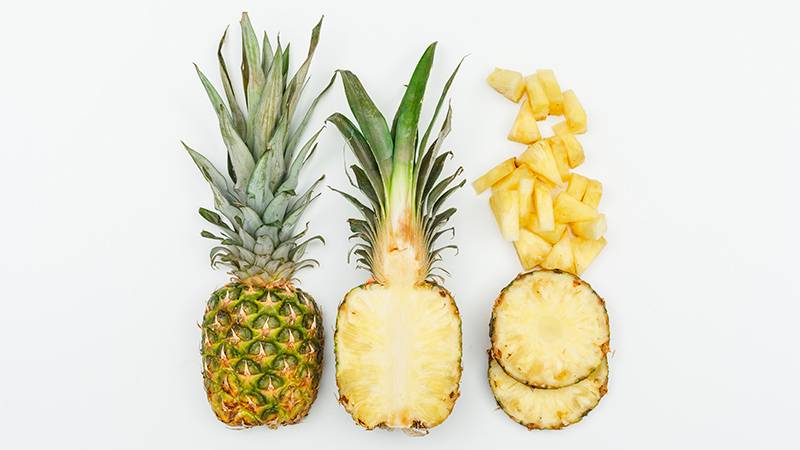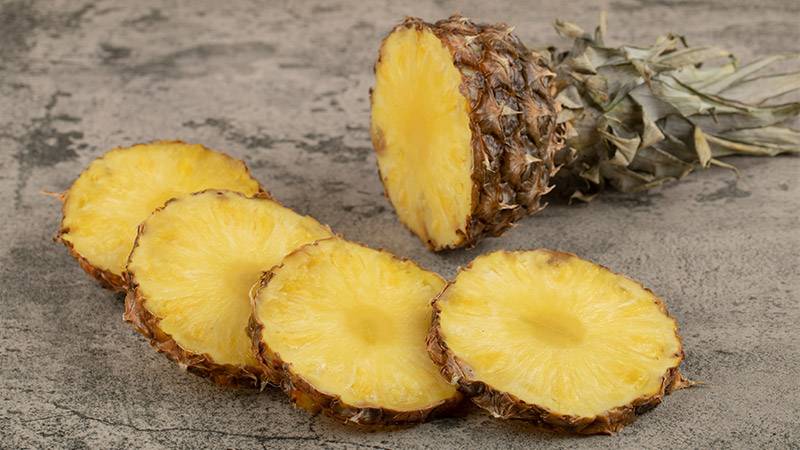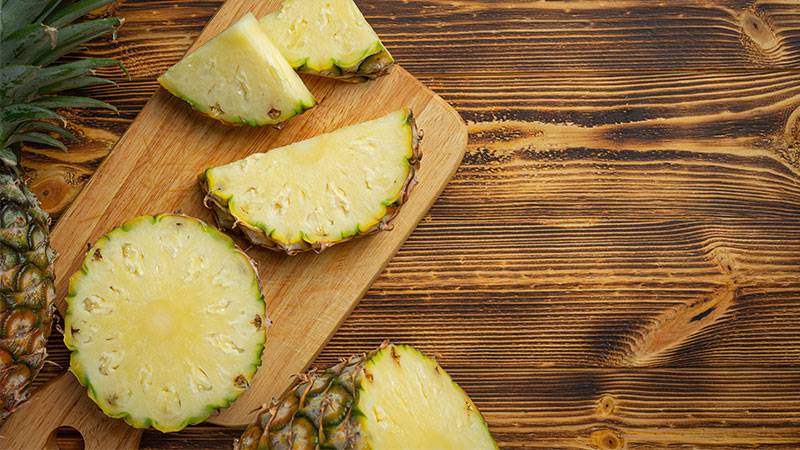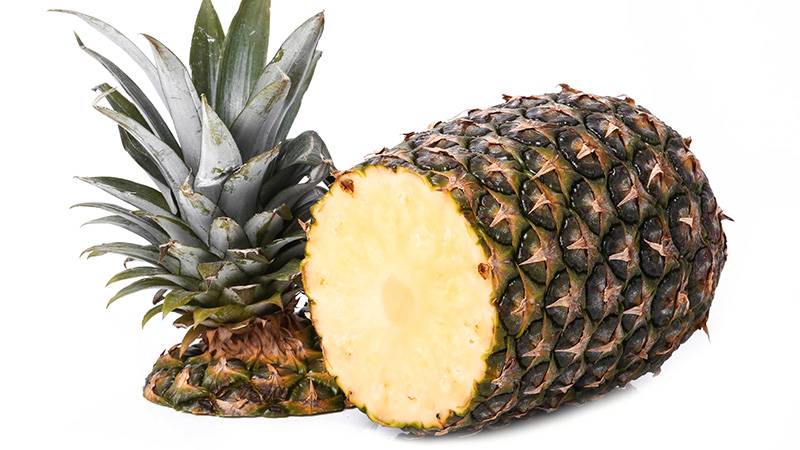Pineapples, with their sweet, tangy flavor and iconic crown, have long been a favorite fruit for many around the world. But as we savor each juicy bite, we’re often left with a lingering question: “Can you compost pineapple?”
The answer not only delves into the world of sustainable living but also highlights the significance of composting. By turning our kitchen waste into nutrient-rich soil, we play a pivotal role in reducing landfill waste and nurturing our gardens. As we dive into this guide, we’ll uncover the ins and outs of composting pineapples, ensuring that nothing goes to waste.
Can You Compost Pineapples and Their Skin?
Absolutely! Both pineapples and their textured skin can be added to your compost pile. When we think of organic waste management, it’s essential to recognize the vast amounts of kitchen waste we produce daily. By composting fruits like pineapples, we’re taking a proactive step towards sustainable gardening and reducing our carbon footprint. The skin, often discarded due to its tough exterior, is a goldmine of nutrients that can enrich our gardens.
However, it’s not just about tossing them into your apartment compost bin. Proper composting methods ensure that the decomposition process is efficient, turning our pineapple waste into valuable, natural fertilizer. So, the next time you enjoy this tropical delight, remember that its journey doesn’t end at the kitchen bin—it’s just the beginning of its contribution to a greener planet.
Is Pineapple Too Acidic for Compost?
Pineapples, known for their tangy flavor, naturally raise questions about their acidity and its impact on compost. The average pH level of a ripe pineapple ranges from 3.5 to 4.5, making it acidic. But does this mean it’s harmful to your compost pile? Not necessarily.
While it’s true that adding a large quantity of acidic materials can disrupt the composting balance, occasional pineapple additions won’t harm. In fact, a diverse compost mix, which includes both acidic and alkaline materials, often results in a richer end product. The key is moderation. By ensuring a balanced mix of green and brown materials in your compost, you can neutralize the pH levels.
So, while pineapples do bring acidity, with proper composting methods and an understanding of pH balance, they can be a beneficial addition to your organic gardening endeavors.


Read More:
The Scent of Pineapple Compost: What to Expect
The aroma of a compost pile is often a topic of curiosity, especially when introducing unique materials like pineapples. So, what’s the olfactory verdict?
Initially, as the pineapple begins to break down, you might notice a sweet, fruity scent. This is quite natural and can even be pleasant compared to other composting smells. However, if your compost pile is too wet or lacks proper aeration, it might produce a sour or unpleasant odor. This isn’t exclusive to pineapples but is a common issue with many fruit waste.
To combat this, ensure regular turning of your compost and maintain a balanced mix of green and brown materials. When done right, composting pineapples shouldn’t result in any offensive odors. Instead, it should blend seamlessly with the earthy aroma typical of a healthy compost pile, contributing positively to your sustainable gardening practices.
Decomposition Timeline: How Long for Pineapples?
When it comes to composting, patience is key. But understanding the decomposition timeline can help set expectations. Pineapples, with their fibrous skin and dense flesh, have a unique breakdown pattern compared to other kitchen wastes.
In a well-maintained compost pile with optimal conditions—meaning it’s regularly turned, has a balanced mix of green and brown materials, and maintains adequate moisture—pineapple waste can decompose in as little as 2 to 3 months. The natural enzymes in pineapples even aid in breaking down other organic materials, making them a valuable addition to your composting endeavors.
However, in less ideal conditions, such as a pile that’s too dry or lacks aeration, the decomposition can extend to 4 to 6 months. The tough skin, in particular, requires more time due to its fibrous nature.
For those using tumbler composters or Bokashi bins, the timeline might be slightly accelerated, thanks to the contained environment and consistent microbial activity.
Softer fruits and vegetables might break down in a month or less, while tougher materials like corn cobs or woody stems can take upwards of six months.
In essence, while pineapples do require some time to fully decompose, their contribution to a nutrient-rich, natural fertilizer makes the wait worthwhile for sustainable gardening enthusiasts.
Step-by-Step: How to Compost Pineapples Effectively

Composting pineapples doesn’t have to be a daunting task. With the right approach, you can turn this tropical treat into a garden goldmine.
Here’s a detailed guide to ensure you’re making the most of your pineapple waste:
Materials
- Pineapple waste (skin, core, and any uneaten pieces)
- Brown materials (dry leaves, cardboard, or newspaper)
- Green materials (vegetable scraps, grass clippings)
- Compost bin or pile
- Garden fork or shovel
Steps
1. Preparation
Begin by chopping the pineapple waste into smaller pieces. This increases the surface area, accelerating the decomposition process.
2. Layering
In your compost bin, start with a layer of brown materials at the base. This aids in aeration and drainage.
3. Add Pineapple
Place your pineapple pieces on top of the brown layer. Remember, moderation is key. Avoid dumping a large quantity at once, as this can disrupt the composting balance.
4. Balance with Green Materials
Add a layer of green materials over the pineapple. This introduces necessary nitrogen and balances the carbon from the brown materials.
5. Turn Regularly
Every week, turn your compost using a garden fork or shovel. This ensures even decomposition and prevents any unpleasant composting smells.
6. Monitor Moisture
Your compost should have the consistency of a wrung-out sponge. If it’s too dry, sprinkle some water. If too wet, add more brown materials.
7. Harvest
In 2-6 months, depending on conditions, your compost should be dark, crumbly, and earthy-smelling. It’s now ready to enrich your garden!
The Benefits of Composting Pineapples

Composting pineapples goes beyond just reducing kitchen waste. This practice offers a myriad of benefits, both for our gardens and the environment at large. Let’s delve into the tangible advantages:
Rich in Nutrients
Pineapples are packed with vitamins and minerals. When composted, these nutrients are returned to the soil, providing plants with essential nourishment. This natural fertilizer can boost plant growth and health without the need for synthetic additives.
Waste Reduction
On average, households produce hundreds of pounds of kitchen waste annually. By composting pineapples and other organic materials, we can divert a significant portion from landfills, contributing to sustainable living.
Carbon Footprint Reduction
Decomposing organic waste in landfills produces methane, a greenhouse gas 25 times more potent than carbon dioxide. Composting pineapples and other organic waste at home can reduce methane emissions, playing a part in combating climate change.
Soil Health
Composted pineapples enhance soil structure, improving its water retention and aeration. This leads to healthier roots and more robust plants.
Economic Savings
By creating your own natural fertilizer through composting, you can save on garden expenses in the long run.
Promotes Biodiversity
A compost-rich garden attracts beneficial microorganisms, worms, and insects, fostering a vibrant ecosystem.
Potential Issues with Composting Pineapples

While composting pineapples offers numerous benefits, it’s essential to be aware of potential challenges. By understanding these issues and their solutions, you can ensure a smooth composting process.
Acidity Concerns
As mentioned, pineapples are naturally acidic. Overloading your compost with them can disrupt its pH balance.
Solution: Mix pineapples with alkaline materials or add crushed eggshells to neutralize the acidity.
Attracting Pests
The sweet scent of decomposing pineapples can attract unwanted pests like fruit flies or rodents.
Solution: Ensure your compost bin has a tight-fitting lid and bury the pineapple waste under other compost materials.
Slow Decomposition
The fibrous nature of pineapple skin can slow down the decomposition process.
Solution: Chop the pineapple into smaller pieces and turn the compost regularly to accelerate breakdown.
Mold Growth
In humid conditions, mold can develop on pineapple pieces, potentially affecting the compost’s quality.
Solution: Maintain a balanced mix of green and brown materials and ensure proper aeration to prevent mold growth.
Unpleasant Odor
If not composted correctly, pineapples can produce a sour smell.
Solution: Regularly turn the compost and ensure it’s neither too wet nor too dry. Balance with brown materials if needed.
Beyond Composting: Creative Uses for Pineapple Waste

Pineapple waste doesn’t have to be limited to the compost bin. With a dash of creativity and a sprinkle of sustainable living, there are myriad ways to repurpose this tropical treasure:
Natural Cleaner
The enzymes in pineapples, especially bromelain, can act as a natural cleaner. Blend the skins with water, strain, and use the liquid to clean surfaces.
Pineapple Tea
Boil pineapple skins with a touch of cinnamon or ginger for a refreshing, nutrient-rich tea.
Plant Pots
Hollowed-out pineapple tops can serve as quirky, biodegradable pots for small plants or succulents.
Pineapple Vinegar
Ferment the skins with sugar and water to produce your own tangy, homemade vinegar.
Craft Projects
The textured skin can be used in art projects, creating unique patterns and prints.
Natural Bird Feeder
Fill a hollowed-out pineapple with bird seeds and hang it in your garden.
Frequently Asked Questions (FAQ)
Yes, you can compost a whole pineapple. However, chopping it into smaller pieces will accelerate the decomposition process in your compost pile.
Beyond composting, pineapple waste can be used to make natural cleaners, teas, vinegar, or even as biodegradable plant pots and bird feeders.
Yes, compost worms will eat pineapple. However, due to its acidity, it’s best to introduce it in moderation and ensure it’s well-buried to avoid attracting pests.
Yes, pineapple tops can be planted in soil. With proper care, they can root and eventually grow into a new pineapple plant.
Absolutely! Like all organic matter, pineapples will decompose over time, especially in a composting environment. The decomposition rate varies based on conditions.
Conclusion
In our journey to answer the question, “Can you compost pineapple?”, we’ve delved deep into the world of sustainable living and organic waste management. From understanding the decomposition timeline of pineapples to exploring creative uses for pineapple waste, it’s evident that these tropical delights offer more than just a sweet treat. They’re a testament to nature’s cycle of giving and taking.
By composting pineapples, we not only enrich our gardens but also contribute to a healthier planet. So, the next time you enjoy this fruity favorite, remember its potential beyond the plate. Embrace composting and let your pineapple make a difference!

